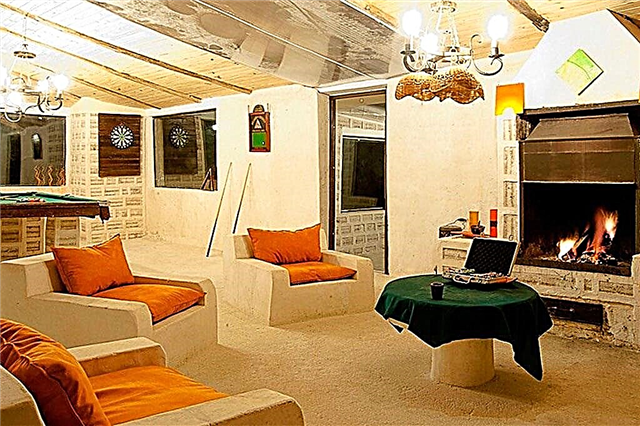Among all European capitals, Rome has the largest number of fountains. In former times, on the territory of the eternal city, there were more than 800 man-made springs, striking in their splendor and luxury. Today, only 280 of them have survived, representing true works of art from the Baroque era.
History of creation

The history of the creation of numerous fountains on the territory of the Italian capital is rooted in the history of Ancient Rome, when 11 aqueducts made it possible to fully provide the Romans with water. Already in those distant times, they began to create large and small fountains designed to quench their thirst and at the same time decorate the squares of the ancient city. In the Renaissance era, on a new wave of the revival of Rome, the popes began to restore abandoned aqueducts and equip new fountains that adorned not only Roman squares, but also noble palaces of noble persons.
Most of these architectural structures, from which the water of the Tiber flows and drips, are mythical images, and also personify the inhabitants of the seas and their depths. The fountains of Rome inspire with their beauty poets and musicians, filmmakers and painters, sculptors and architects. Under the impression of the murmuring streams of water and the falling drops sparkling in the rays of the Mediterranean sun, the Italian composer Ottorino Respighi in 1916 created the symphonic poem "Fountains of Rome".
Colosseum, Roman Forum, Palatine Hill with one ticket - 20 €
Time entrance to St. Peter's Basilica with audio guide - € 19.50
Fast track entry to the Vatican Museums and the Sistine Chapel - 30 €
Skip-the-line: museums, Sistine Chapel, St. Peter's Basilica - 47.10 €
Hop-on hop-off sightseeing bus tour - 14 €
Bus ticket in Rome: 24, 48 or 72 hours - from 28 €
St. Peter's Basilica with ascent to the dome and a visit to the crypt - 45 €
Fountain of Neptune

Many Roman fountains are dedicated to the God of the seas. In one of them, the sculptor Giovanni Ceccarini depicts Neptune with his formidable weapon - a trident, which the deity squeezes with his right hand. The god of the seas is surrounded by the inhabitants of the waters, dolphins and newts. The architectural composition of the fountain is complemented by a small bowl with a huge sea shell, from which, in turn, water flows into the pool in a cascade.
In the sculptural composition of the Fountain of Neptune by Antonio della Bitta, the God of the Seas fights with a huge octopus. It is noteworthy that the fountain of Neptune was created after the formation of the independent Italian state. Therefore, the architects, creating the fountain of Neptune, sought to show the huge role of Italy as a maritime power.
Fountain of the Four Rivers

The Four Rivers fountain located in Piazza Navona was created by the architect Bernini in the 17th century to decorate the palace of Pope Innocent X Pamphilj. This creation symbolizes the large rivers of the four parts of the world known at that time: the Ganges in Asia, the Nile in Africa, the Danube in Europe and the Rio del Plata in America. Great rivers are depicted in the images of giants, among which the sculpture of the Nile was created with a veil on his head, which symbolizes the insufficient knowledge of the sources of this river at that time.
Fountain Triton

Lorenzo Bernini created in 1642 one of the most beautiful fountains in Rome - the "Triton" fountain. A half-human and half-fish sea monster sits on the flaps of a huge shell, from the edges of which water flows into the pool.
Bee fountain

The Bee Fountain, made by Lorenzo Bernini, differs from other similar creations by its lightness and simplicity of composition. Between the doors of the open sea shell, three hardworking little bees pour water into the shell. It is noteworthy that the name of the customer of the fountain can be seen on one of the shells. Despite the fact that the fountain was built in 1644, it is clear that the customer was Pope Urban VIII. However, in 2004 this pretty fountain suffered a sad fate. A mentally ill man decapitated one of the bees with a hammer. However, even after such barbarism, the ancient fountain has not lost its charm.
Fountain Boat

Among the creations of Bernini it is worth noting one of the most beloved by tourists fountains "Boat". It is interesting that its creator is the father of the author of "Four Rivers". This masterpiece of architecture was created as a tribute to the memory of the flood of 1598, during which many residents of the city died. The fountain depicts a leaky boat sinking in the waters of the raging Tiber, from the stern and bow of which water flows. I must say that tourists love to rest on the “Boat” in the evenings. Often there are so many visitors that they make it difficult to see the outlines of a favorite architectural structure.
Fountain Naiad

The fountain symbolizing the elements of water is the main decoration of the Republic Square. This is the Naiad fountain, created in 1870 by order of Pope Pius IX. After the reconstruction in 1901, the fountain acquired its modern look. Four nymphs in the form of different water elements form the basis of the composition. One of the naiads symbolizes the lake and sits on a swan, the other saddled a river monster and symbolizes the river, the third naiad rides on a seahorse, symbolizing the ocean, and the fourth harnessed the dragon, personifying the waters of the underworld.
Fountain of Turtles

The Turtle Fountain is considered one of the most beautiful and quite popular among tourists. Naked young men rest their feet on dolphin heads, and each tries to reach with one hand to the edge of a huge bowl, which is held on the mighty shoulders of young men. From the mouths of the dolphins, streams of water flow into the huge sea shells, and from there the water flows into the pool.
Trevi Fountain

The largest and most popular is the Trevi Fountain, created on the square of the same name against the backdrop of the façade of Pallazzo Poli. I must say that the pallazzo was at one time the property of Princess Volkonskaya. At her invitation, N. V. Gogol was here and read his "Inspector General" to the guests. This famous fountain was built on the site of an ancient source called the Water of the Virgin.
According to an ancient Roman legend, thirsty Roman soldiers saw a virgin near the source, who showed them where to look for water. Soon in 19 BC. e. the legendary spring was transformed into the hydraulic system of Rome. In the Middle Ages, the hydraulic system was abandoned, and it suffered the sad fate of oblivion. During the Renaissance, by order of Pope Clement XII, a large fountain began to be erected on the site of an abandoned hydraulic system, the construction of which lasted about 30 years. The main work on the construction of the Trevi Fountain was carried out under the direction of the architect Nicola Salvi, who used the sketches of Lorenzo Bernini created a hundred years ago.

The central figure of the architectural structure is the figure of the sea god, near which the goddess of Health and the goddess of Abundance are located on both sides. In front of the statues of the gods, a pool has been created, representing the sea element. This fountain has been often used as a hallmark of Rome since 1960, when the famous Felini's film Dolce Vita was released, in which the main character jumps into the Trevi waters while wearing her clothes.

Many guests of the Italian capital, having visited this fountain, try to follow a long tradition and throw a coin into the water to come back here again. Therefore, about 3 thousand euros are removed from the bottom of the fountain every day.
In Rome, GuruTurizma recommends the following hotels:
Camping Village Roma
Rome
Seasonal outdoor pool with bar and hot tub

Twentyone Hotel
Rome
Located on Via Cola di Rienzo, one of the best shopping streets

Hotel Gravina San Pietro
Rome
10 minutes walk from St. Peter's Square












